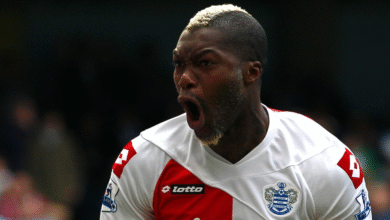Tottenham Hotspurs Formation 24/25 What we’re using and how we can improve it

Tottenham Hotspur, under the management of Ange Postecoglou, has been demonstrating an attractive style of play, characterized by fluid and dynamic football. The manager’s tactical acumen has significantly impacted the team’s performance, introducing a new dimension to their gameplay. This article delves into Tottenham’s formation for the 2024/25 season and explores potential areas for improvement.
Ange Postecoglou, an astute tactician, has made a notable impression at Tottenham Hotspur, fostering a style of football that emphasizes fluidity and creativity. His approach has brought a breath of fresh air to the team, contrasting with the methods of previous managers. Despite the continued influence of past tactical strategies, Postecoglou has implemented his own distinctive style, which has been well-received by fans and pundits alike. One aspect of this new approach is the formation used by the team, which has evolved and been refined throughout the season.
As of the 2024/25 season, Tottenham Hotspur predominantly employs a 4-3-3 formation. This tactical setup involves four defenders, three midfielders, and three attackers, providing a balanced structure that supports both defensive solidity and attacking flexibility. The 4-3-3 formation aligns with Postecoglou’s preference for utilizing wide players, a strategy that capitalizes on the strengths of key individuals such as Son Heung-min, Dejan Kulusevski, and Pedro Porro.
In the initial phase of the Premier League season, Tottenham has used the 4-3-3 formation in two of their three matches. This tactical choice was a return to a system that proved effective in the previous season, following a less successful experiment with a 4-2-3-1 formation against Leicester City in the opening game of the season. The decision to revert to the 4-3-3 formation reflects Postecoglou’s commitment to a system that has previously brought positive results.
The 4-3-3 formation’s effectiveness is largely attributed to Tottenham’s key players, who thrive in wide positions. Son Heung-min and Dejan Kulusevski, known for their ability to exploit space on the flanks, are central to this tactical approach. Additionally, Pedro Porro’s contributions on the right wing further enhance the team’s offensive capabilities. By focusing on wide play, Tottenham can maximize the impact of these influential players, creating opportunities and stretching the opposition’s defense.
However, there is room for improvement in Tottenham’s current formation. One area that could be addressed is the inclusion of a traditional center forward within the 4-3-3 setup. In the two games where Tottenham has employed this formation this season, players who are more effective on the wings, such as Kulusevski and Brennan Johnson, have been positioned centrally. This positional adjustment has sometimes led to a lack of a focal point in attack, which could be mitigated by incorporating a dedicated center forward.
The absence of Dominic Solanke, who is currently injured, has been a factor in this regard. Solanke’s return to fitness is eagerly anticipated, as his presence could provide the team with a central attacking option. In the only match Solanke participated in this season, Tottenham employed a 4-2-3-1 formation. While this system can be perceived as a variant of the 4-3-3 when out of possession, it did not fully utilize Solanke’s strengths during offensive phases. Consequently, there is a potential for Solanke to be more effectively integrated into a 4-3-3 formation upon his return.
In conclusion, while Tottenham Hotspur’s current use of the 4-3-3 formation has shown promise, there are opportunities for refinement. The integration of a center forward like Dominic Solanke could enhance the team’s attacking prowess and provide a more defined point of reference in the attack. As the season progresses, Postecoglou’s tactical adjustments will likely continue to evolve, reflecting his ongoing efforts to optimize the team’s performance and capitalize on their strengths.















